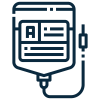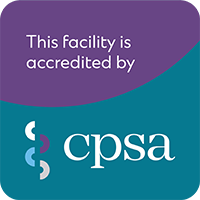Platelet Rich Plasma (PRP)
UNLEASH THE POWER OF YOUR IMMUNE SYSTEM

WHAT IS PLATELET RICH PLASMA (PRP)?
Platelet-rich plasma therapy, sometimes called PRP therapy, attempts to take advantage of the blood’s natural healing properties to repair damaged cartilage, tendons, ligaments, muscles, or even bone.

WHAT IS PLASMA?
Plasma refers to the liquid component of blood; it is the medium for red and white blood cells and other material traveling in the blood stream. Plasma is mostly water but also includes proteins, nutrients, glucose, and antibodies, among other components.

WHAT ARE PLATELETS?
Like red and white blood cells, platelets are a normal component of blood. Platelets alone do not have any restorative or healing properties; rather, they secrete substances called growth factors and other proteins that regulate cell division, stimulate tissue regeneration, and promote healing.

WHAT IS IN A PLATELET-RICH PLASMA INJECTION?
All PRP injections are not the same. The exact make-up of platelet-rich plasma depends on several variables, including the concentration of platelets, the concentration of white blood cells, the number of residual red blood cells, and the use of additives.

CONCENTRATION OF PLATELETS
While it may seem logical that plasma with the highest possible platelet concentration will get better results than plasma with a lower platelet concentration, that is not necessarily the case. One lab study suggested that plasma with concentrations 2.5 times that of normal blood was ideal, and higher concentrations might actually limit new cell growth. More research is needed in this area.

WHITE BLOOD CELL COUNT
The immune system depends on white blood cells to fight infection, but the cells’ role in PRP therapy is unclear. Some experts suspect that white blood cells inhibit tissues’ ability to heal, perhaps promoting inflammation, scar tissue, and damage to nearby tissues. Other experts think that, while white blood cells may not aid tissue healing, they may have beneficial effects.
What Does Platelete-Rich Plasma Therapy Do?
Platelets are part of the blood that circulate around the body ready to help with blood clotting should you have a cut, broken bone, injury that bleeds internally, or any other type of injury. Besides containing clotting factors, the platelets release growth factors that help start the healing sequence. With a concentrated amount of platelets, larger quantities of these growth factors are released to stimulate a natural healing response. In theory, blood injection therapy could be used in any area where a rapid healing response is desired such as the tendon-muscle junction, muscle injuries, torn ligaments, damaged joints, or inflamed tissue. Platelets release bioactive proteins that enhance tissue regeneration and healing. For example, studies show that after using the platelet-rich plasma (PRP) for tendon problems, new tendon cells (called tenocytes) start to develop in the area treated. Chondrocytes (cartilage cells) form when PRP is injected into damaged cartilage. Growth factors that help build new blood supply to the area are also increased in number. At the same time, there is a buildup of type I collagen fibers. Type I collagen makes up the base structure of tendon tissue. Torn tendons and ligaments don’t always heal well because they have a poor blood supply. Connective tissues such as ligaments and tendons heal by filling in with scar tissue that doesn’t bear the brunt of large loads well. This increases the risk of re-injury. Other available treatments for chronic tendon problems do not necessarily improve the tendon’s ability to heal in the same way that PRP does. And injections of PRP don’t have the side effects that can occur with steroid injections or long-term use of non-steroidal anti-inflammatory drugs (NSAIDs).
PRP: An Emerging Therapy
Though laboratory studies have shown platelet-rich plasma encourages cell regeneration, scientists do not completely understand how or why this happens. Experts still have many questions regarding platelet-rich plasma treatment:
- Indications, i.e. when should this treatment be used?
- What are the optimal concentrations of platelets and white blood cells?
- How much platelet-rich plasma should be injected?
- When and with what frequency should injections be given? Is one injection enough?
- What is the best rehabilitation protocol to use after PRP injection?
Several clinical trials are underway and will help add to the body of knowledge regarding platelet-rich plasma.
Cost
Platelet-rich plasma therapy is considered “experimental” by most insurance companies. A single treatment of one joint can cost $400 to $2,000, paid out-of-pocket by the patient. If more than one joint is treated, the cost increases but typically does not double.
Who is a Candidate For PRP?
While there is no universally adopted list of criteria describing who is eligible for PRP injections, in general patients who fail conservative treatment including education, activity modification, physiotherapy, chiropractic, bracing, medications, cortisone injections, joint aspiration, etc.
Platelet-rich plasma injections are not typically recommended for the most severe cases of osteoarthritis.
Platelet-Rich Plasma Injection Step-By-Step
The procedure can be used non-surgically when treating tennis elbow, muscle injuries, joint osteoarthritis, or cartilage degeneration. Most non-surgical procedures can be done on an outpatient basis, usually in the office setting.
This is an in-office procedure that involves a blood draw, preparation of the PRP, and the injection:
- Blood is drawn from a vein in the patient’s arm into a vial (typically 15 to 60 mL, or less than 2 ounces of blood is needed).
- The blood is processed using a centrifuge machine. The centrifuge spins the blood fast enough to separate it into layers based on weight. Heavier parts (e.g., red blood cells) stay on the bottom. Platelets and white blood cells spin out just above the red blood cell layer. Lighter particles (plasma without platelets or blood cells) make up the top layer in the test tube.
- A doctor prepares the centrifuged platelet-rich plasma for injection. It is typically ready for injection as quickly as 30 minutes later.
- The affected area is cleansed with disinfectant such as alcohol or chlorhexidine.
- A special gel will be applied to an area of skin near the injection site. Dynamic musculoskeletal ultrasound is used to place the needle that delivers the PRP directly into the joint or other area of injury.
- When used on an outpatient basis for a nonsurgical treatment, peripheral nerve blocks or a numbing agent like buffered lidocaine, or ropivocaine is used to make the procedure more comfortable.
- The patient is asked to relax; this will facilitate the injection and also can make the injection less painful.
- Using a syringe and needle, the doctor injects the platelet-rich plasma into the affected area. In ligaments and tendons, fenestration (i.e. poking holes) of the structure is simultaneously performed.
- The injection area is cleansed and bandaged.
- The platelet-rich plasma typically stimulates a series of biological responses, and the injection site may be swollen and painful for about 5-10 days.
What Might Go Wrong?
This procedure is still considered “experimental”. There have been very few reports of complications or adverse reactions. Whenever an injection of any kind is given, there is always the risk of infection. PRP has a strong antibacterial effect so risk of local infection is minimal. Some patients have reported increased pain, redness, and swelling at the injection site but this response didn’t last long. We will offer you a pain medication to help with this. Also, possible but uncommon are allergic reactions to the lidocaine used as a numbing agent. Since your own blood is used, there is no risk for transmitted blood-infections. There’s little concern about reactions to the blood, transfer of infection or HIV, or getting cancer cells through someone else’s blood because you donate your own blood to use in the procedure.
The worst that might happen with this treatment is that you won’t get any better or more rarely, the needle might go through a blood vessel or nerve causing bleeding or nerve damage. With other types of injection treatment, scar tissue and calcification (formation of tiny calcium deposits) can occur around the injection site. This has not been reported with platelet-rich plasma injections, but it is theoretically possible.
How is Platelet-Rich Plasma Made?
The most common way to prepare PRP involves centrifuging a patient’s blood sample. A vial of blood is placed in a centrifuge, where it is spun at intensely high speeds. The spinning causes the blood to separate into layers:
- Red blood cells, approximately 45% of blood, are forced to the bottom of the vial.
- White blood cells and platelets form a thin middle layer, called a buffy coat, which comprises less than 1% of the centrifuged blood.
- “Platelet-poor” plasma, or plasma with a low concentration of platelets, makes up the remaining top layer, about 55% of the centrifuged blood sample.
- Once the centrifuge process is complete the doctor will remove the vial from the centrifuge and prepare the PRP solution for injection.
- Centrifugation speed and time can vary. Differences in centrifugation speed and time affect the composition of PRP. There is no clear consensus on what centrifugation process produces the best results.
Efficacy of Platelet Rich-Plasma
PRP has been used in surgeries to promote cell regeneration since 1987, and a growing body of evidence shows it is a viable treatment for tendinosis. Not until recently, though, have experts researched and debated whether or not platelet-rich plasma (PRP) injections are an effective treatment for osteoarthritis. Experts who have reviewed the existing body of research believe the evidence is largely encouraging and merits further investigation.
PRP Does Not Work For Everyone
PRP proponents assert that PRP fails to successfully treat symptoms in some cases because of differences in PRP formulation or injection administration – in other words, certain changes in variables, such as PRP preparation methods, the amount of PRP injected, and the frequency of injections, can influence the effectiveness of this treatment.
Not everyone with a musculoskeletal problem as described can have this treatment. Anyone with a condition called thrombocytopenia (low platelet levels), anyone with anemia, anyone with a history of cancer, and women who are pregnant or breast-feeding will not qualify. Thrombocytopenia can occur with drug treatment for blood clotting disorders, rheumatoid arthritis, or some forms of chemotherapy for cancer. The use of blood thinners such as Coumadin or Warfarin and the presence of infection in the wound site are also contraindications (reasons why platelet-rich plasma is not an option for you).
Additionally, patients who have an allergy to cow products should tell their doctor. These patients could experience an allergic reaction if the platelet-rich plasma is combined with an additive called bovine thrombin, which is derived from cows.
Advantages of PRP
There are several reasons why patients might consider platelet-rich plasma injections:
- Platelet-rich plasma is autologous, meaning it comes from the patient’s body, so it is natural, and the injections carry few risks.
- Physical therapy, chiropractic, massage and/or weight loss can often improve but not always eliminate symptoms.
- Cortisone injections are proven to reduce pain, but repeated injections can weaken ligaments and tendons over time, and may have a detrimental effect on healthy cartilage, however this has not been conclusively proven.
- Anti-inflammatory medications (NSAIDS) such as aspirin and ibuprofen can reduce pain, but long-term use can aggravate stomach problems, blood pressure and heart problems.
- Minor surgeries to treat osteoarthritis, such as arthroscopic debridement, have mixed results, and may be no better than placebo.
- Joint replacement surgeries are major surgeries that require long-term rehabilitation, and should be reserved for more debilitating cases of arthritis
- While more data are needed, research so far seems to be promising.
How Will I Prepare For This Procedure?
- Avoid corticosteroid medications for 2 to 3 weeks prior to the procedure.
- Stop blood thinners (Coumadin, Aspirin, Plavix, etc) 5 days prior to procedure. This must be approved by your cardiologist or primary doctor.
- If you take St John’s wart, fish oil, garlique, ginkoba, and vitamin E supplementation, please stop these 14 days prior to the injection.
- Stop taking non-steroidal anti-inflammatory drugs (NSAIDs), such as aspirin or ibuprofen, or arthritis medications such as Celebrex, a week prior to the procedure
- Drink plenty of fluids the day before the procedure
- You must not smoke after midnight the day before the operation.
- Please wear comfortable, loose fitting clothing with an elastic waist band such as gym shorts, sweats, or pajama bottoms. Please do not wear jeans.
- For your safety, you must have a responsible adult to drive you home. Failure to have a driver may result in the cancellation of your procedure. Taxis are not permitted.
- Some patients may require anti-anxiety medication immediately before the procedure
After the PRP Injection: Immediate Follow-Up Care
Immediately after the procedure, you will remain lying down and under observation for a few minutes up to a half an hour. You might have some discomfort in the area of the injection that can last up to two weeks. In fact, sometimes it can seem like you are worse than before the treatment. That’s because an inflammatory response has just been stimulated. Don’t worry – the temporary worsening of your symptoms usually won’t last.
Once you return home, you can elevate the leg or arm, and limit your activities as much as needed to remain comfortable. Your doctor may suggest using Tylenol, Tylenol #3, and Tramacet for pain relief but ibuprofen or other anti-inflammatories are not advised. That’s because the treatment is designed to set up an inflammatory response, so you don’t want to stop that process with medications.
Patients are advised to take it easy for a few days and avoid putting strain on the affected joint until they see their physiotherapist.
- Does not take anti-inflammatory pain medication; another pain medication may be prescribed by the doctor
- Wear a brace, air boot or sling to protect and immobilize the affected joint; a patient who receives an injection at the ankle, knee, or hip may be advised to use crutches. If a splint was recommended, you should wear it during the first 7 days.
- Avoid anti-inflammatory medications for six weeks after the procedure.
- Although not absolute, please avoid application of ice when possible.
- You may shower immediately, but please avoid swimming or baths/Jacuzzis/hot tubs for the first 2 days after the procedure, to reduce the risk of infection.
Patients who do not have physically demanding jobs can usually go back to work the next day. Patients can resume normal daily activities when swelling and pain decrease, typically a few days after the injections. A well-balanced diet is recommended. However, supplements of Vitamins A, C, D, E, Folate, Magnesium, and Zinc can promote healing. Sources of amino acids or protein are also recommended.
Rehabilitation: What Should I Expect as I Recover?
One week after the procedure, the rehabilitation program begins. This phase of therapy is the most important part of the whole treatment program. In particular, loading a tendon or ligament (e.g. eccentric, compressive, and friction) is the only know mechanism to specialize the new general cells into tendon or ligament cells.
Your physical therapist should have experience with rehabilitation protocols for platelet rich plasma therapy. In general, it is important to normalize biomechanics around the affected area, progressively load the affected area, and optimize neuromuscular activation.
REFERENCES
- Van Buul GM, Koevoet WLM, Kops N, et al. Platelet-rich plasma relea- sate inhibits inflammatory processes in osteoarthritic chondrocytes. Am J Sports Med. 2011;39:2362–2370.
- Drengk A, Zapf A, Sturmer EK, et al. Influence of platelet-rich plasma on chondrogenic differentiation and proliferation of chondrocytes and mes- enchymal stem cells. Cells Tissues Organs. 2009;189:317–326.
- Anitua E, Sanchez M, Nurden AT, et al. Platelet-released growth factors enhance the secretion of hyaluronic acid and induce hepatocyte growth factor production by synovial fibroblasts from arthritic patients. Rheuma- tology (Oxford). 2007;46:1769–1772.
- Descalzi F, Ulivi V, Cancedda R, Piscitelli F, Luongo L, Guida F, Gatta L, Maione S, Di Marzo V. Platelet-rich plasma exerts antinociceptive activity by a peripheral endocannabinoid-related mechanism. Tissue Eng Part A. 2013 Oct;19(19-20):2120-9. doi: 10.1089/ten.TEA.2012.0557. Epub 2013 Jun 6. PubMed PMID: 23578218.
- The International Cellular Medical Society. Guidelines for the Use of Platelet Rich Plasma. Adopted 2011. cellmedicinesociety.org. Accessed August 15, 2013.
- ECRI Institute. AHRQ Healthcare Horizon Scanning System Potential High Impact Interventions: Priority Area 01: Arthritis and Nontraumatic Joint Disease. (Prepared by ECRI Institute under Contract No. HHSA290201000006C.) Rockville, MD: Agency for Healthcare Research and Quality. June 2013. ahrq.gov.
- Graziani F, Ivanovski S, Cei S, Ducci F, Tonetti M, Gabriele M. The in vitro effect of different PRP concentrations on osteoblasts and fibroblasts. Clin Oral Implants Res. 2006 Apr;17(2):212-9. PubMed PMID: 16584418.
- Taralyn M. McCarrel, Tom Minas, Lisa A. Fortier; Optimization of Leukocyte Concentration in Platelet-Rich Plasma for the Treatment of Tendinopathy. The Journal of Bone & Joint Surgery. 2012 Oct;94(19):e143 1-8.
- Dohan Ehrenfest DM, Bielecki T, Mishra A, Borzini P, Inchingolo F, Sammartino G, Rasmusson L, Evert PA. In search of a consensus terminology in the field of platelet concentrates for surgical use: platelet-rich plasma (PRP), platelet-rich fibrin (PRF), fibrin gel polymerization and leukocytes. Curr Pharm Biotechnol. 2012 Jun;13(7):1131-7. Review. PubMed PMID: 21740379.
- Ferrari M, Zia S, Valbonesi M. A new technique for hemodilution, preparation of autologous platelet-rich plasma and intraoperative blood salvage in cardiac surgery. Int J Artif Organs. 1987;10:47–50.
- Marx R, Garg A. Dental and craniofacial applications of platelet- rich plasma. Carol Stream: Quintessence Publishing Co, Inc.; 2005.
- Kajikawa Y, Morihara T, Sakamoto H, Matsuda K, Oshima Y, Yoshida A, Nagae M, Arai Y, Kawata M, Kubo T. Platelet-rich plasma enhances the initial mobilization of circulation-derived cells for tendon healing. J Cell Physiol. 2008 Jun;215(3):837-45. doi: 10.1002/jcp.21368. PubMed PMID: 18181148.
- Sánchez M, Anitua E, Azofra J, Andía I, Padilla S, Mujika I. Comparison of surgically repaired Achilles tendon tears using platelet-rich fibrin matrices. Am J Sports Med. 2007 Feb;35(2):245-51.
- Mishra A, Pavelko T. Treatment of chronic elbow tendinosis with buffered platelet-rich plasma. Am J Sports Med. 2006 Nov;34(11):1774-8. Epub 2006 May 30. PubMed PMID: 16735582.
- Mishra AK, Skrepnik NV, Edwards SG, Jones GL, Sampson S, Vermillion DA, Ramsey ML, Karli DC, Rettig AC. Platelet-Rich Plasma Significantly Improves Clinical Outcomes in Patients With Chronic Tennis Elbow: A Double-Blind, Prospective, Multicenter, Controlled Trial of 230 Patients. Am J Sports Med. 2013 Jul 3. [Epub ahead of print] PubMed PMID: 23825183.
- Smyth NA, Murawski CD, Fortier LA, Cole BJ, Kennedy JG. Platelet-rich plasma in the pathologic processes of cartilage: review of basic science evidence. Arthroscopy. 2013 Aug;29(8):1399-409. doi: 10.1016/j.arthro.2013.03.004. Epub 2013 May 11. PubMed PMID: 23669235.
- Kon E, Filardo G, Matteo BD, Marcacci M. PRP For the Treatment of Cartilage Pathology. Open Orthop J. 2013 May 3;7:120-8. doi: 10.2174/1874325001307010120. Print 2013. PubMed PMID: 23730375; PubMed Central PMCID: PMC3664439.
- Lee KS, Wilson JJ, Rabago DP, Baer GS, Jacobson JA, Borrero CG. Musculoskeletal applications of platelet-rich plasma: fad or future? AJR Am J Roentgenol. 2011 Mar;196(3):628-36. doi: 10.2214/AJR.10.5975. Review. PubMed PMID: 21343507.
- Center for Disease Control. Spotlight Osteoarthritis: Lifetime Risk of Symptomatic Knee Osteoarthritis. Updated October 20, 2010. cdc.gov. Accessed October 22, 2013.
- Patel S, Dhillon MS, Aggarwal S, Marwaha N, Jain A. Treatment with platelet-rich plasma is more effective than placebo for knee osteoarthritis: a prospective, double-blind, randomized trial. Am J Sports Med. 2013 Feb;41(2):356-64. doi: 10.1177/0363546512471299. Epub 2013 Jan 8. PubMed PMID: 23299850.
- Halpern B, Chaudhury S, Rodeo SA, Hayter C, Bogner E, Potter HG, Nguyen J. Clinical and MRI outcomes after platelet-rich plasma treatment for knee osteoarthritis. Clin J Sport Med. 2013 May;23(3):238-9. doi: 10.1097/JSM.0b013e31827c3846. PubMed PMID: 23238250.
- Eckstein F, Cicuttini F, Raynauld JP, et al. Magnetic resonance imaging (MRI) of articular cartilage in knee osteoarthritis (OA): morphological assessment. Osteoarthr Cartilage. 2006;14:46–75.
- Raynauld JP, Martel-Pelletier J, Berthiaume MJ, et al. Long term eval- uation of disease progression through the quantitative magnetic reso- nance imaging of symptomatic knee osteoarthritis patients: correlation with clinical symptoms and radiographic changes. Arthitis Res Ther. 2006;8:21.
- Lee KS, Wilson JJ, Rabago DP, Baer GS, Jacobson JA, Borrero CG. Musculoskeletal applications of platelet-rich plasma: fad or future? AJR Am J Roentgenol. 2011 Mar;196(3):628-36. doi: 10.2214/AJR.10.5975. Review. PubMed PMID: 21343507.
- Kolata G. As Sports Medicine Surges, Hope and Hype Outpace Proven Treatments. The New York Times. Sept 4 2011. nytimes.com. Accessed October 8, 2013.
- Dragoo JL, Danial CM, Braun HJ, Pouliot MA, Kim HJ. The chondrotoxicity of single-dose corticosteroids. Knee Surg Sports Traumatol Arthrosc. 2012 Sep;20(9):1809-14. doi: 10.1007/s00167-011-1820-6. Epub 2011 Dec 21. PubMed PMID: 22186921.
- Piper SL, Kramer JD, Kim HT, Feeley BT. Effects of local anesthetics on articular cartilage. Am J Sports Med. 2011 Oct;39(10):2245-53. doi: 10.1177/0363546511402780. Epub 2011 Apr 22. Review. PubMed PMID: 21515808.
- Kirkley A, Birmingham TB, Litchfield RB, Giffin JR, Willits KR, Wong CJ, Feagan BG, Donner A, Griffin SH, D’Ascanio LM, Pope JE, Fowler PJ. A randomized trial of arthroscopic surgery for osteoarthritis of the knee. N Engl J Med. 2008 Sep 11;359(11):1097-107. doi: 10.1056/NEJMoa0708333. Erratum in: N Engl J Med. 2009 Nov 12;361(20):2004. PubMed PMID: 18784099.
- Moseley JB, O’Malley K, Petersen NJ, Menke TJ, Brody BA, Kuykendall DH, Hollingsworth JC, Ashton CM, Wray NP. A controlled trial of arthroscopic surgery for osteoarthritis of the knee. N Engl J Med. 2002 Jul 11;347(2):81-8. PubMed PMID: 12110735.
- Biologic Orthopedic Society. 2013. LinkedIn. Discussion Page: What should the total reimbursement be to a provider for platelet rich plasma (PRP) procedure including any cost of goods and services and the office visit? Retrieved September 24, 2013.
- Jang SJ, Kim JD, Cha SS. Platelet-rich plasma (PRP) injections as an effective treatment for early osteoarthritis. Eur J Orthop Surg Traumatol. 2013 Jul;23(5):573-80. doi: 10.1007/s00590-012-1037-5. Epub 2012 Jul 7. PubMed PMID: 23412170.
- Zhu Y, Yuan M, Meng HY, Wang AY, Guo QY, Wang Y, Peng J. Basic science and clinical application of platelet-rich plasma for cartilage defects and osteoarthritis: a review. Osteoarthritis Cartilage. 2013 Aug 7. doi:pii: S1063-4584(13)00903-5. 10.1016/j.joca.2013.07.017. [Epub ahead of print] PubMed PMID: 23933379.
- Santo F. Martinez, M.D. Practical Guidelines for Using PRP in the Orthopaedic Office. American Academy of Orthopaedic Surgeons. aaos.org. Published September 10, 2010. Accessed November 15, 2012.
Referral
For Health Care Professionals
Consultation with one of our medical specialists requires a referral from a physician, chiropractor or physiotherapist.



